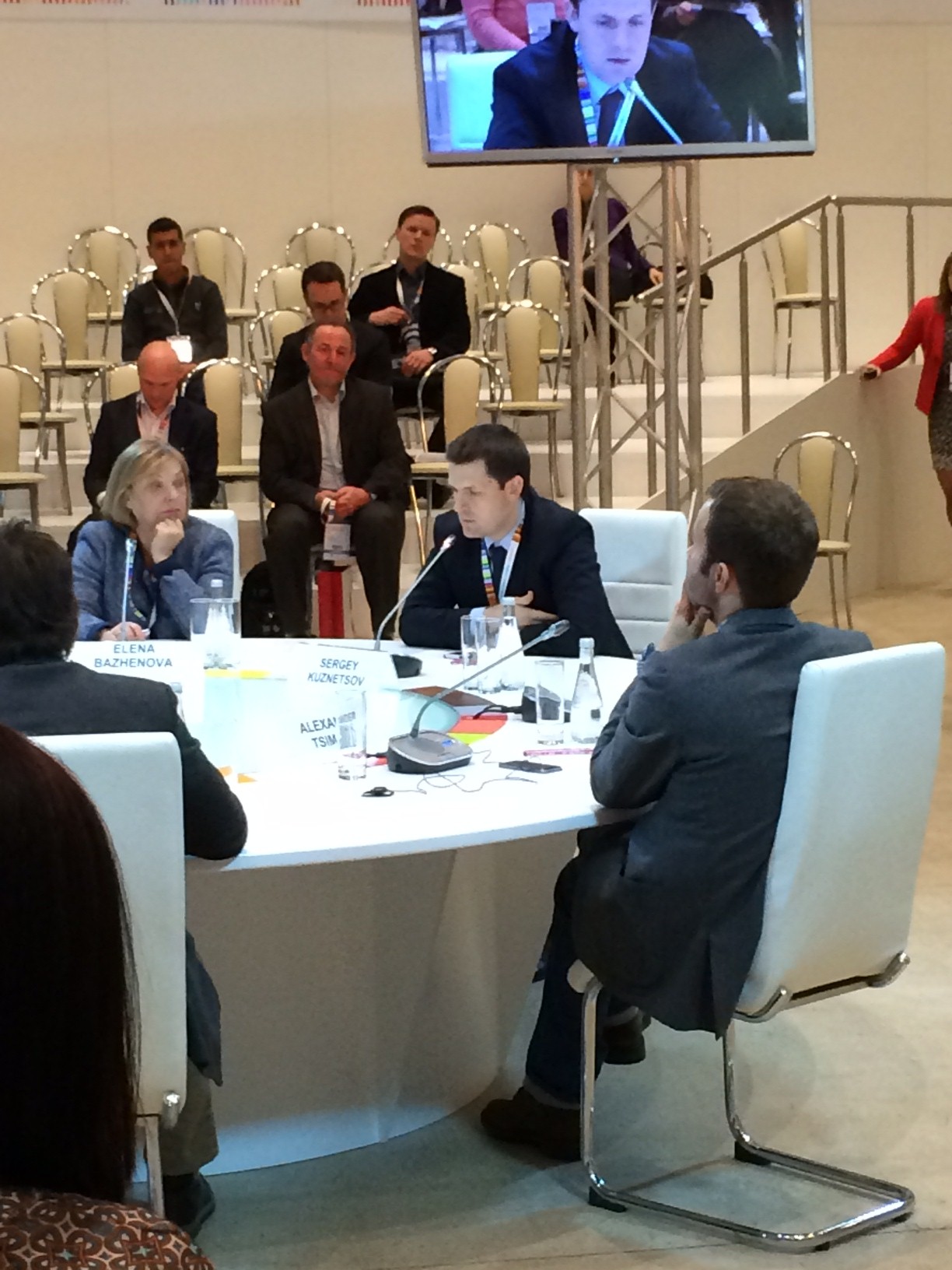Through contests – to stars

On March 20 chief architect of Moscow Sergey Kuznetsov spoke at the World Summit for Creative Industries in the Manezh Central Exhibition Hall. He and the other participants of the “Design in Architecture” panel discussion discussed the importance of creativity in the architectural process, the existing methods of self-realization of young architects and how to retain the ability to think creatively over time.
According to Sergey Kuznetsov, today the city’s need for creative thinking architects is demonstrated by a system of open contests and an overall policy shift toward transparency and competition: “Now everything happens freely. Before the fact of consultation with the city was a blocking factor itself.”
Now to receive recommendations from the city at an early stage in order to facilitate the passage of later agreements is a normal practice: it happens on a weekly basis at the chief architect’s working reviews of projects.
Contests allow new bureaus to put their name already on the concept stage next to world-wide bureaus, stressed Kuznetsov, as it happened for example with the young architects from MEL studio. In December, they reached the finals of the international competition for the concept of the National Center for Contemporary Arts’ new building.
However, as noted by the chief architect, “stars are born of implementation, not of paper,” and it is specifically the completed project that is the final evaluation, something that is incomparable with the ability to draw well, participate in exhibitions and so on.

Today, young architects can choose between private practice and working in a large bureau. According to Sergey Kuznetsov, in a major company the path to success can be longer because you can settle down for a long time — so the former path personally appealed to him.
But in any case, it is easier for young professionals now than a few years ago, said Kuznetsov, because the problem of lack of access to consultations at the city level and to platforms where you can assert yourself has already been eliminated.
Ample opportunities for young professionals opens up a gradual entrance of Russian architecture to western markets through international competitions, Kuznetsov added. This process began relatively recently. Moreover, as noted by other participants of the panel discussion, on the level of public schools, such as the Moscow Architectural Institute, to intensify exchange is fairly difficult.
However, Sergey Kuznetsov noted that the advancement of architects, in addition to the implementation of projects and the state’s position, is also key for individual qualities such as professional communication skills. They, he says, serve as “product packaging.”

Kuznetsov noted continuous education and training as fundamentally important. “There are no objective reasons to lose qualifications ’in the process’.” When a person draws the same thing for 30 years, it is not a question of age, but rather self-cultivation."
Moreover, over the years, the chances to create a masterpiece only increase — for example, the architect Frank Lloyd Wright realized his famous Guggenheim Museum at age 91.
The World Summit for Creative Industries was held this year at the Global Entrepreneurship Congress. The panel discussion was attended by Peter Kudryavtsev — partner of the Russian-Danish bureau Citymakers, Nikita Tokarev — MARSH director, Dmitry Aranchii — architect and founder of the Dmytro Aranchii Architects bureau, Elena Bazhenova — vice president of the Union of Moscow Architects and manager of the Tsimailo Lyashenko and Partners architectural bureau, Alexander Tsimailo and Nikolai Lyashenko.




